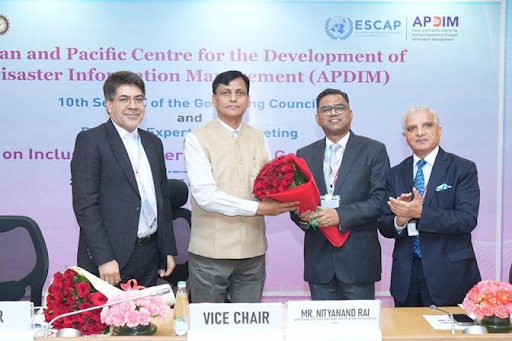



The Global Safety Report 2025 highlights a paradox: record-high safety perceptions coexist with an 11-point gender gap across 100+ countries. Women’s insecurity, driven by domestic violence, demands targeted policies and holistic reforms, proving economic progress alone cannot ensure equal safety.

Copyright infringement not intended
Picture Courtesy: DOWN TO EARTH
The Global Safety Report 2025, by American analytics company Gallup, highlights the need for gender-specific interventions amid rising global conflicts.
Overall Safety Surge
73% of adults feel safe walking alone at night.
Gender Disparity
Women report 67% safety (highest ever), vs 78% for men. In 104/144 countries, the divide is ≥10 points. 32% of women vs 21% of men report community insecurity.
High-Income Paradox
Widest gaps in wealthy nations; US (26 points: 58% women vs 84% men). EU states like Italy (44% women, akin to Uganda).
Regional Variations
South Africa ranks least safe (33% overall, 25% women). Singapore tops the list at 97-98% for both genders.
Violence Patterns: Men face more public killings; women endure intimate partner/family violence (51% of female homicides, 85,000 in 2023 per UN).
Legal and Social Barriers: Women have 75% of men's legal rights globally, restricting mobility and economic participation, heightening vulnerability.
Economic Independence: In high-income countries, women's workforce participation exposes them to harassment, yet policies focus on general crime reduction, benefiting men more.
Cultural Norms: In many countries, societal expectations limit women's nighttime mobility.
The National Crime Records Bureau (NCRB) 2022 (latest available) shows crimes against women rising 30% from 3.37 lakh in 2014 to 4.45 lakh in 2022, averaging 51 FIRs hourly.
Sexual violence peaked at 39,000 cases in 2016, with one rape every 15 minutes in 2018. Workplace harassment averaged 445 cases annually since 2018.
Cruelty by husband/relatives dominated at 31.4%; followed by kidnapping/abduction (19.2%), assault on modesty (18.7%), and rape (7.1%).
Uttar Pradesh led with 65,743 cases; Delhi had the highest rate (144.4/lakh); followed by Maharashtra, Rajasthan, and West Bengal. 13 states/UTs exceeded the national average.
Patriarchal Societal Norms: Rigid gender roles, enforced by traditional orthodox family structure, and social/local bodies (eg. Khap Panchayats).
Exploitation at Workplace: POSH Act 2013 not effectively implemented, 400+ annual cases persist; Hema Committee (2024) exposed Malayalam film's culture of exploitation, pay gaps, and ineffective Internal Compliance Committee (ICC).
Lack of Safe Public Spaces: Poor lighting and transport fuel harassment; 2012 Delhi gang rape exemplified risks in unsafe areas.
Insufficient Infrastructure and Resources: Under-equipped police/forensic labs delay investigations.
Weak Law Enforcement and Judicial Systems: Low conviction rates (27-28% for rape, 2018-2022); delays like Nirbhaya trial highlight inefficiencies. Unnao rape case (2017) showed challenges faced by the justice system; including political interference and victim oppression.
Social Stigma: Discourages reporting; According to the NCRB 2021, nearly 89% of the rapes were committed by persons known to the victim.
Economic Dependency: Traps women in abuse, especially in low-income families.
Technological and Cyber Threats: Rising online harassment demands updated laws.
Legal frameworks
Bharatiya Nyaya Sanhita (BNS) 2023: Consolidated offenses against women and children into a single chapter and introduced stricter provisions against sexual harassment, gang rape, and trafficking.
Protection of Women from Domestic Violence Act, 2005: For civil remedies and offers legal protection against physical, sexual, verbal, emotional, and economic abuse within the household.
Dowry Prohibition Act, 1961: Prohibits the giving or receiving of a dowry and penalizes related harassment and violence.
Sexual Harassment of Women at Workplace (Prevention, Prohibition and Redressal) Act, 2013 (PoSH): Requires employers to set up an Internal Complaints Committee (ICC) to address sexual harassment in the workplace.
Criminal Law (Amendment) Act, 2018: Includes provisions for death penalty for rape of girls under 12 years of age and mandates the completion of trials within two months.
Protection of Children from Sexual Offences (POCSO) Act, 2012: Provides a legal framework for the protection of children from sexual abuse, exploitation, and pornography.
Prohibition of Child Marriage Act, 2006: Aims to prevent child marriages by declaring them voidable and punishing those involved.
Immoral Traffic (Prevention) Act, 1956: Curbs trafficking and sexual exploitation for commercial purposes and provides for the rescue and rehabilitation of victims.
Judicial Interventions
Vishaka vs State of Rajasthan (1997): Established guidelines to prevent and address sexual harassment at the workplace before the enactment of the PoSH Act.
Shah Bano Begum case (1985): Reaffirmed the right of a divorced Muslim woman to claim maintenance from her former husband.
Independent Thought vs Union of India (2017): Criminalized sexual relation with a minor wife, recognizing marital rape involving minors.
Joseph Shine vs Union of India (2018): Decriminalized adultery, emphasizing a woman's right to dignity and sexual autonomy.
Government initiatives and schemes
Mission Shakti: A comprehensive umbrella scheme with two sub-schemes for women's empowerment:
Nirbhaya Fund: A non-lapsable fund that supports projects related to women's safety, including Fast Track Special Courts, Anti-Human Trafficking Units, and the Safe City Project.
One Stop Centres (OSCs): Provide integrated support, such as medical aid, police assistance, and psycho-social counseling, to women affected by violence.
Women's Helplines (181): Offer 24/7 emergency and non-emergency assistance to women in distress across the country.
Cyber Crime Portal: Allows citizens to report cybercrime complaints, including those involving obscene content and child abuse material.
SHe-Box: An online portal launched by the Ministry of Women and Child Development (MWCD) for reporting and tracking complaints of sexual harassment at the workplace.
National Database on Sexual Offenders (NDSO): A database to facilitate the investigation and tracking of sexual offenders by law enforcement agencies.
Anti-Human Trafficking Units (AHTUs): Set up in districts to prevent human trafficking and rescue victims.
Working Women Hostels: Provide safe accommodation and daycare facilities for the children of working mothers.
Source: DOWN TO EARTH
|
PRACTICE QUESTION Q. With reference to the Global Safety Report 2025, consider the following statements: 1. The report is produced by the World Economic Forum. 2. South Africa is ranked as the safest country. Which of the above statements is/are correct? A) 1 only B) 2 only C) Both 1 and 2 D) Neither 1 nor 2 Answer: D Explanation: Statement 1 is incorrect: The report is produced by American analytics company Gallup. Statement 2 is incorrect: Singapore is ranked safest; South Africa is ranked as the least safe by public perception. |
The Global Safety Report 2025 is an annual assessment of perceptions of safety and security worldwide. It is based on surveys in over 140 countries and tracks metrics like feeling safe while walking alone, confidence in police.
Singapore ranks safest (97–98%), while South Africa is least safe (33%).
National Crime Records Bureau (NCRB) 2022 shows 4.45 lakh cases of crimes against women, averaging 51 FIRs every hour.







© 2025 iasgyan. All right reserved